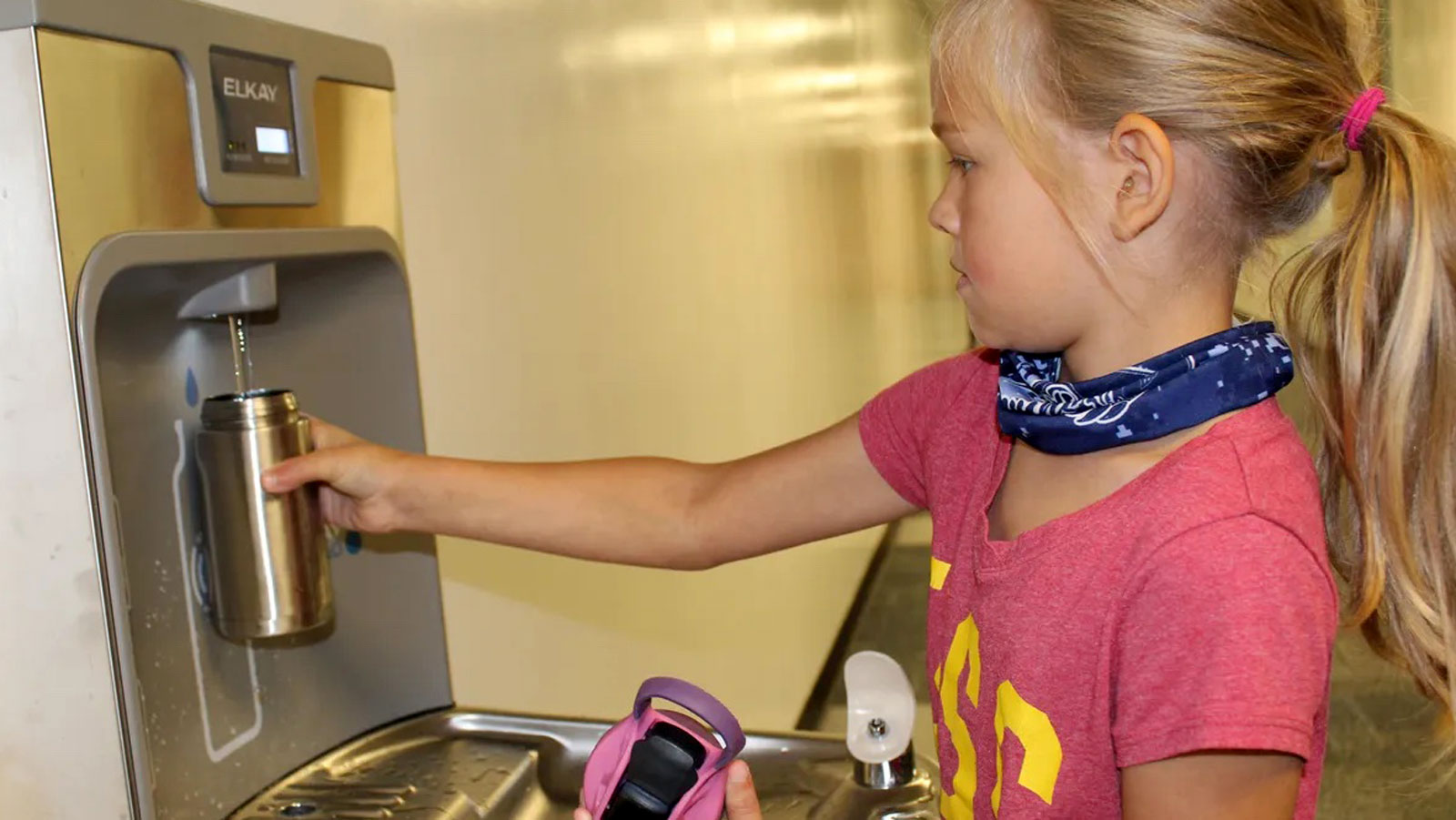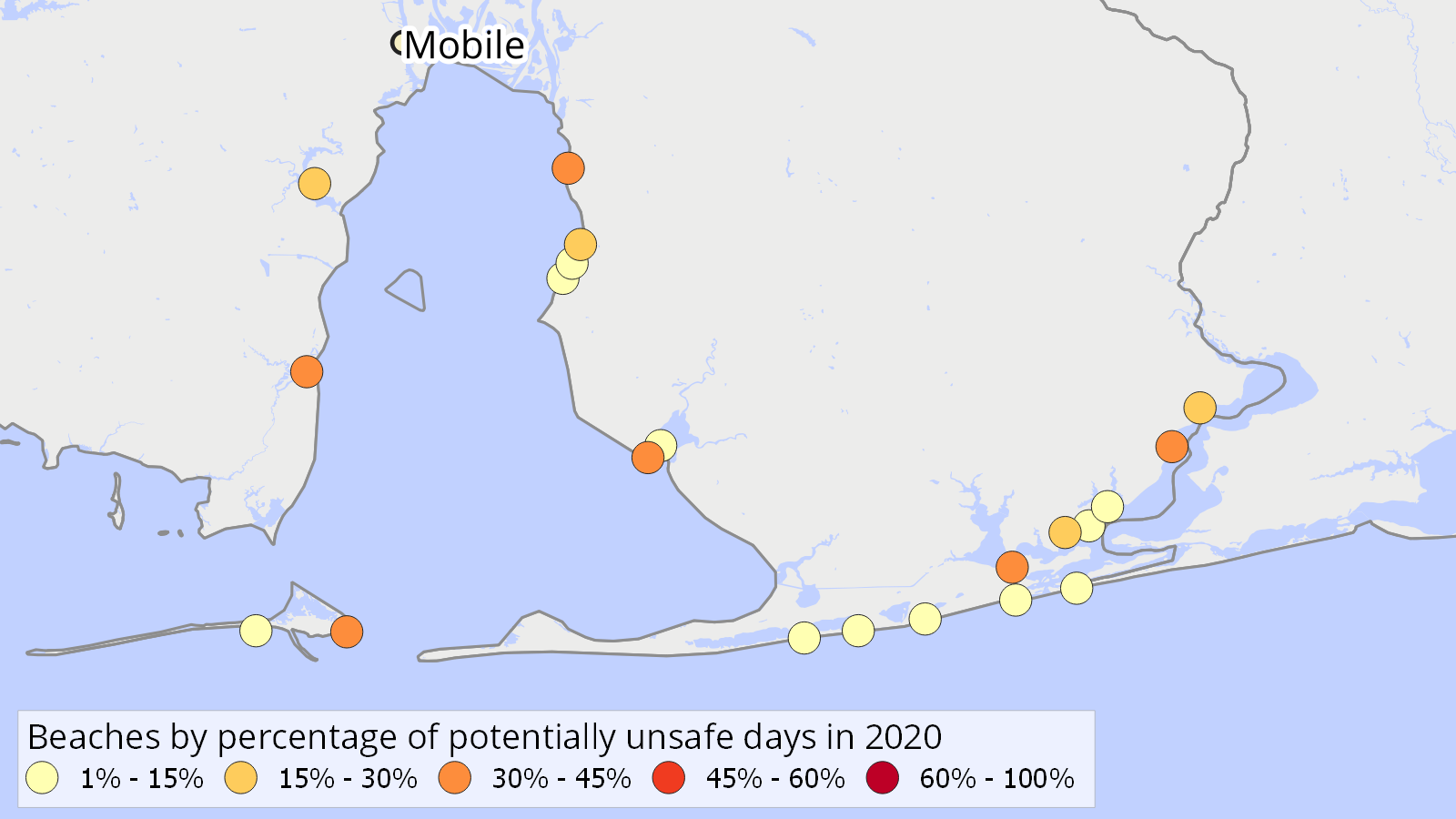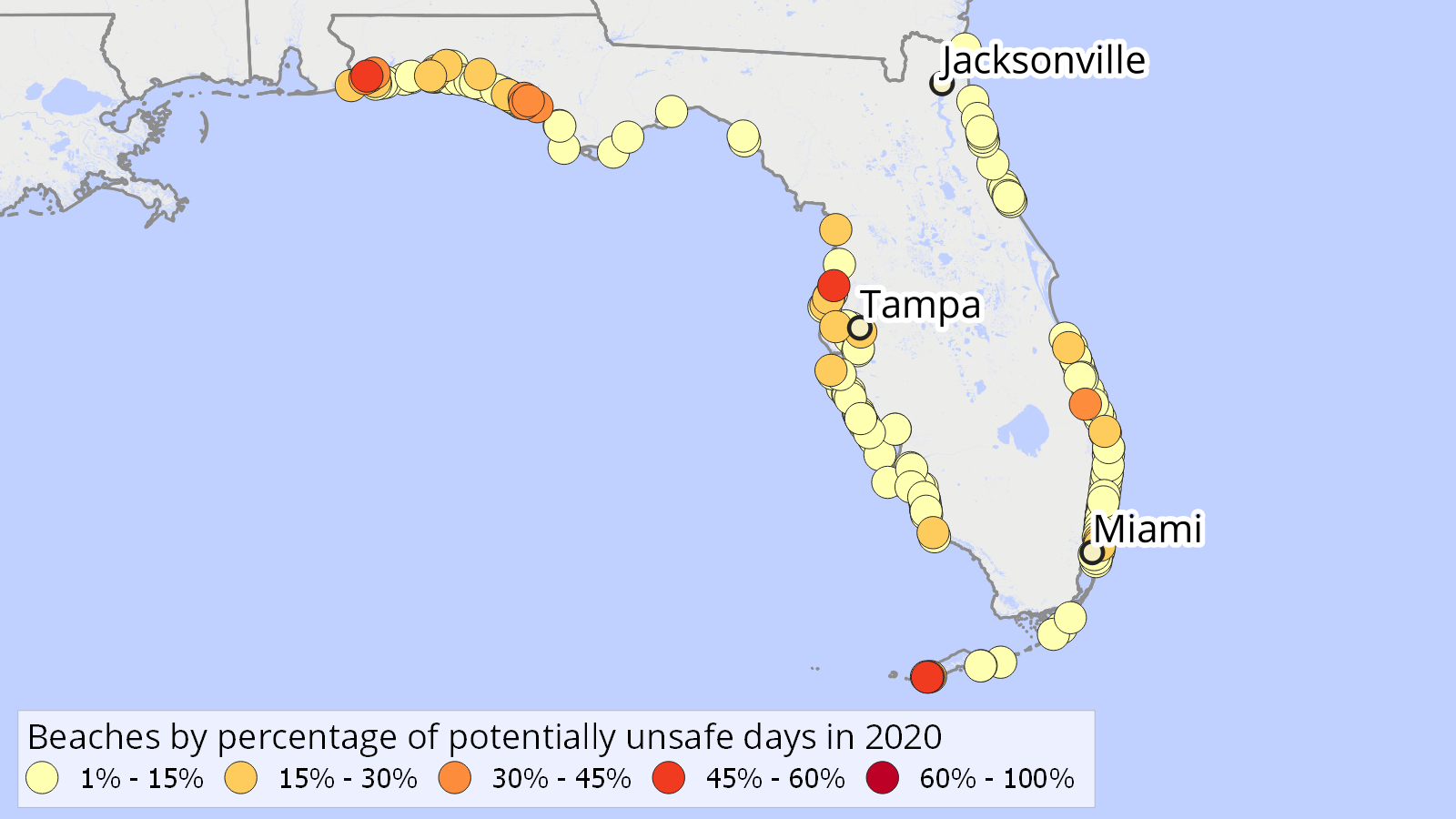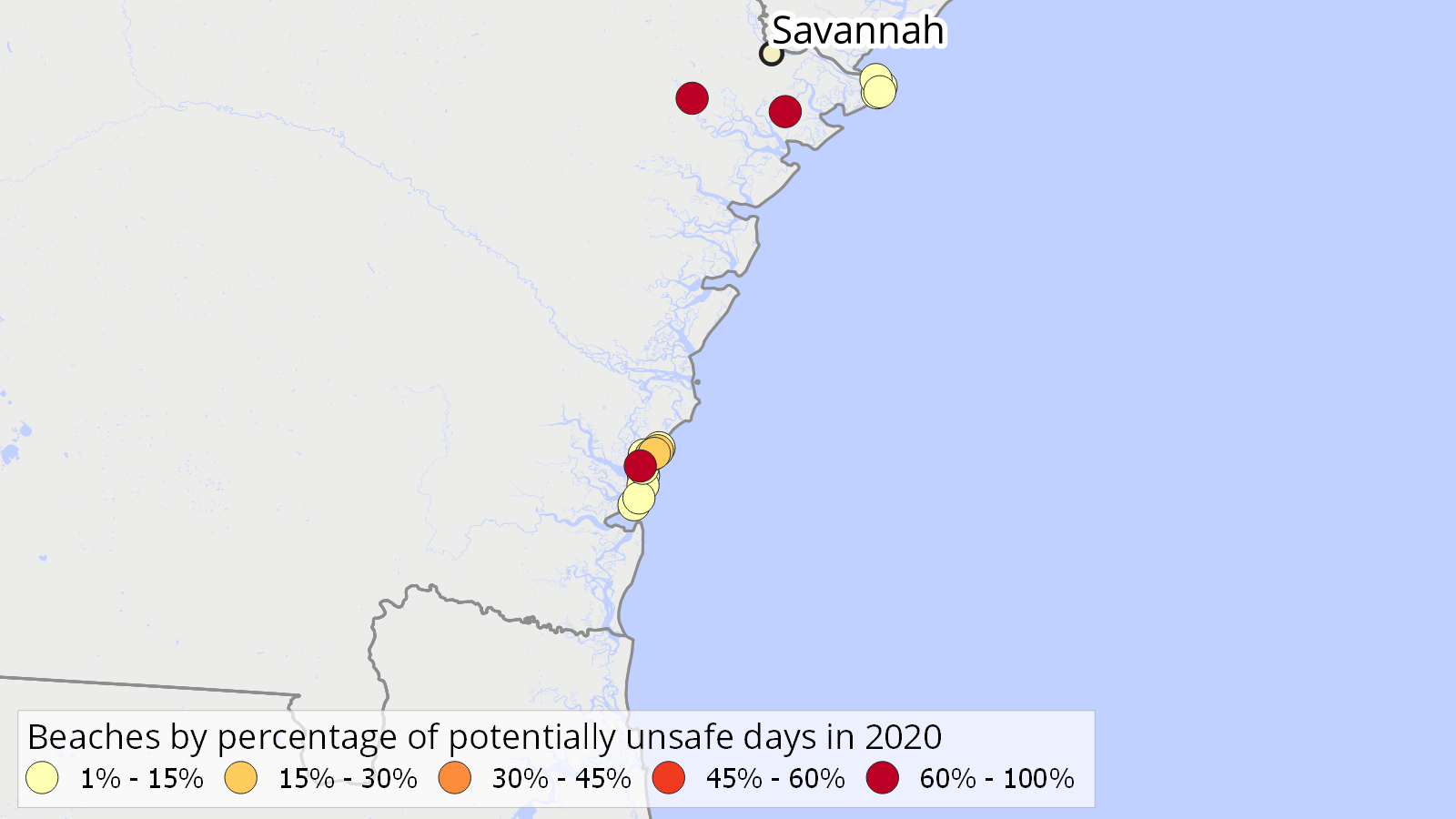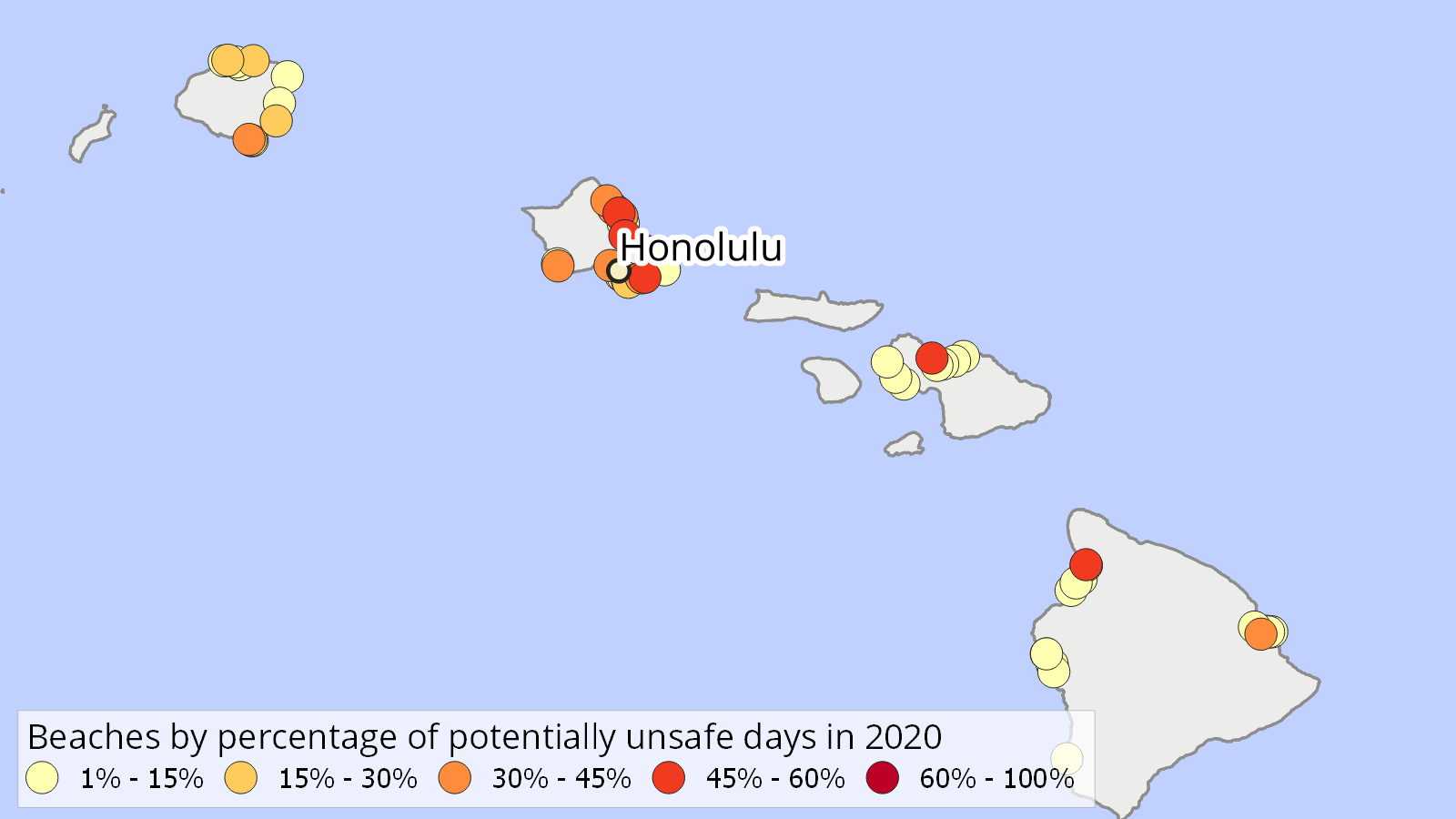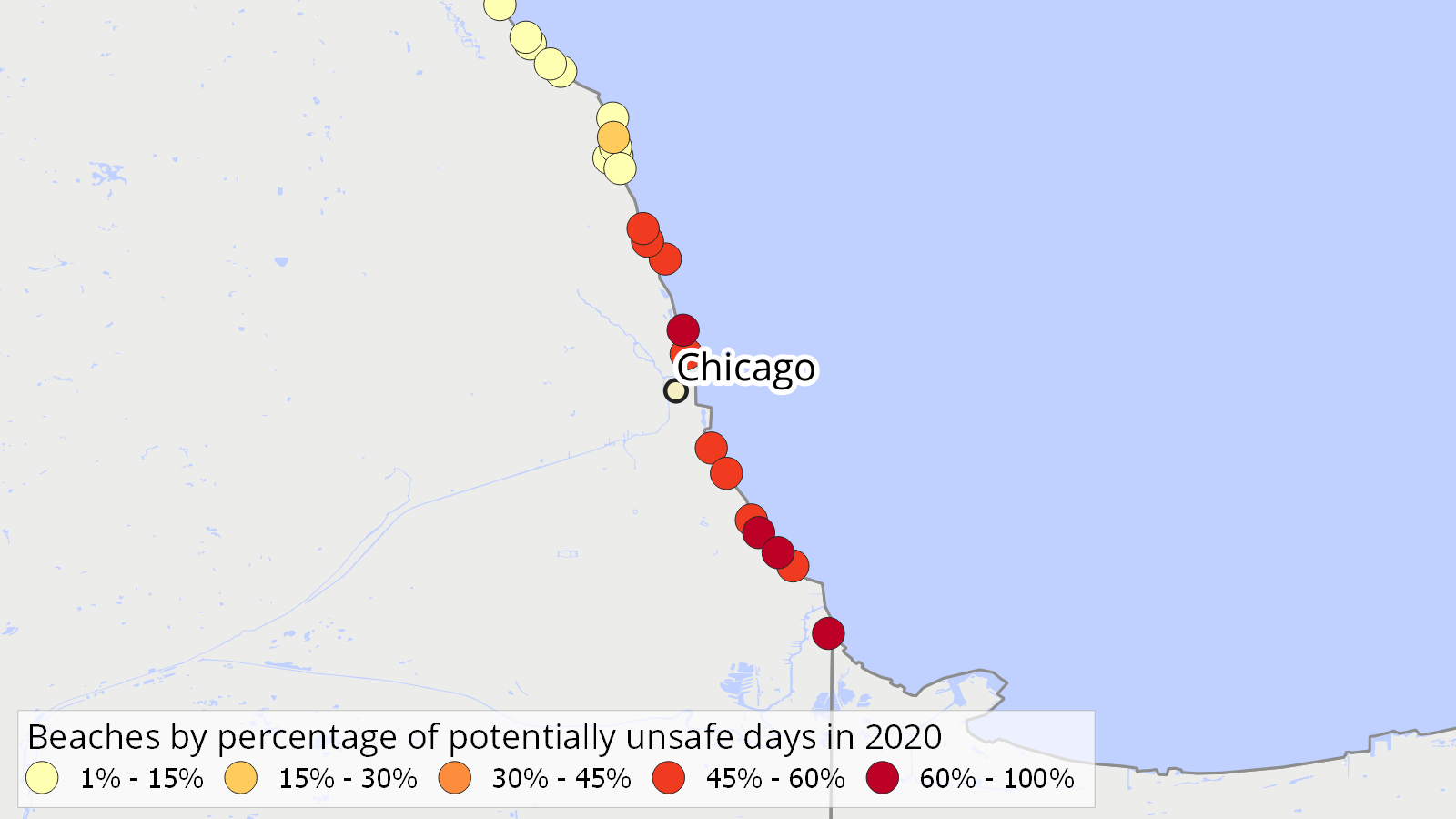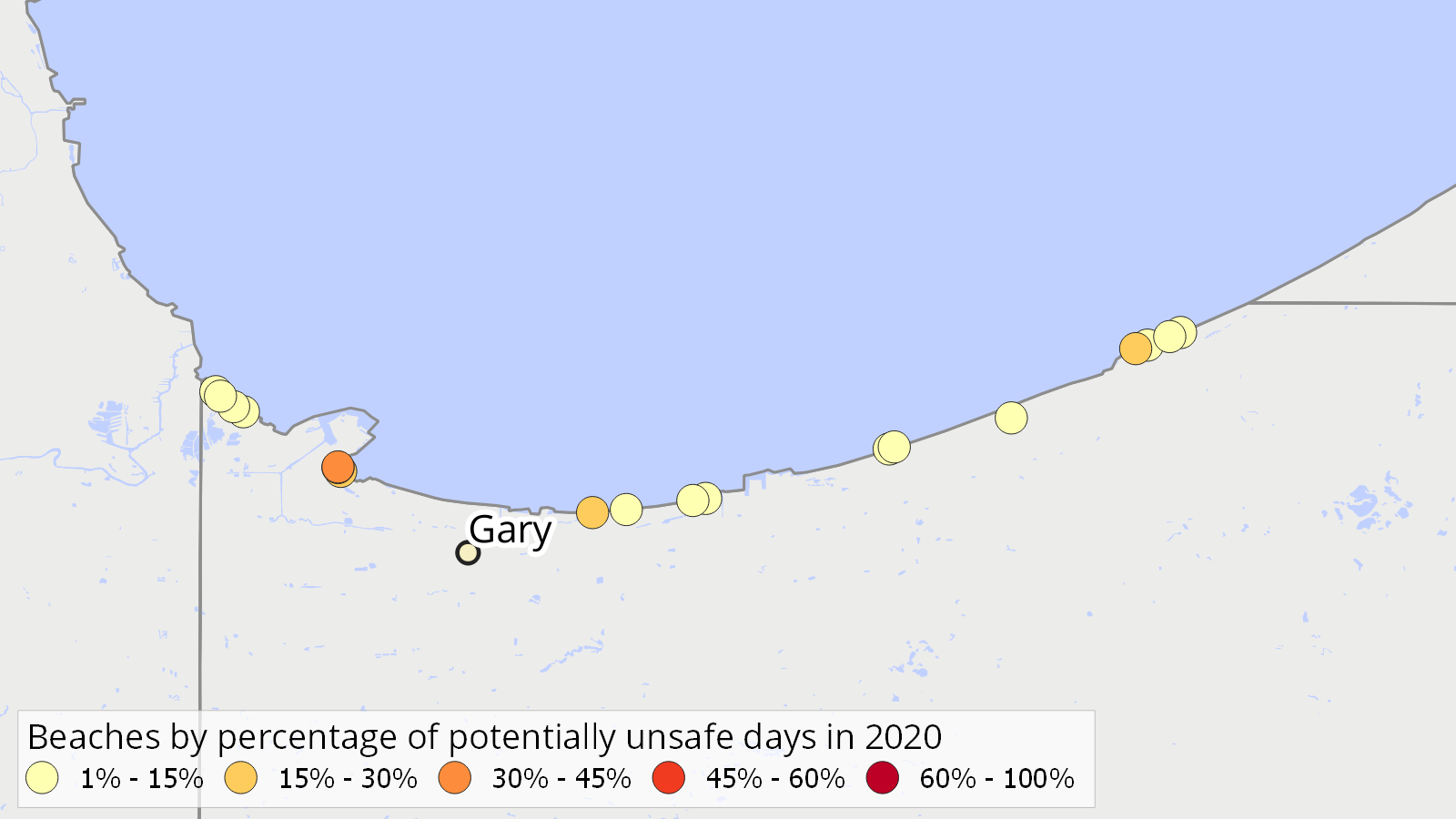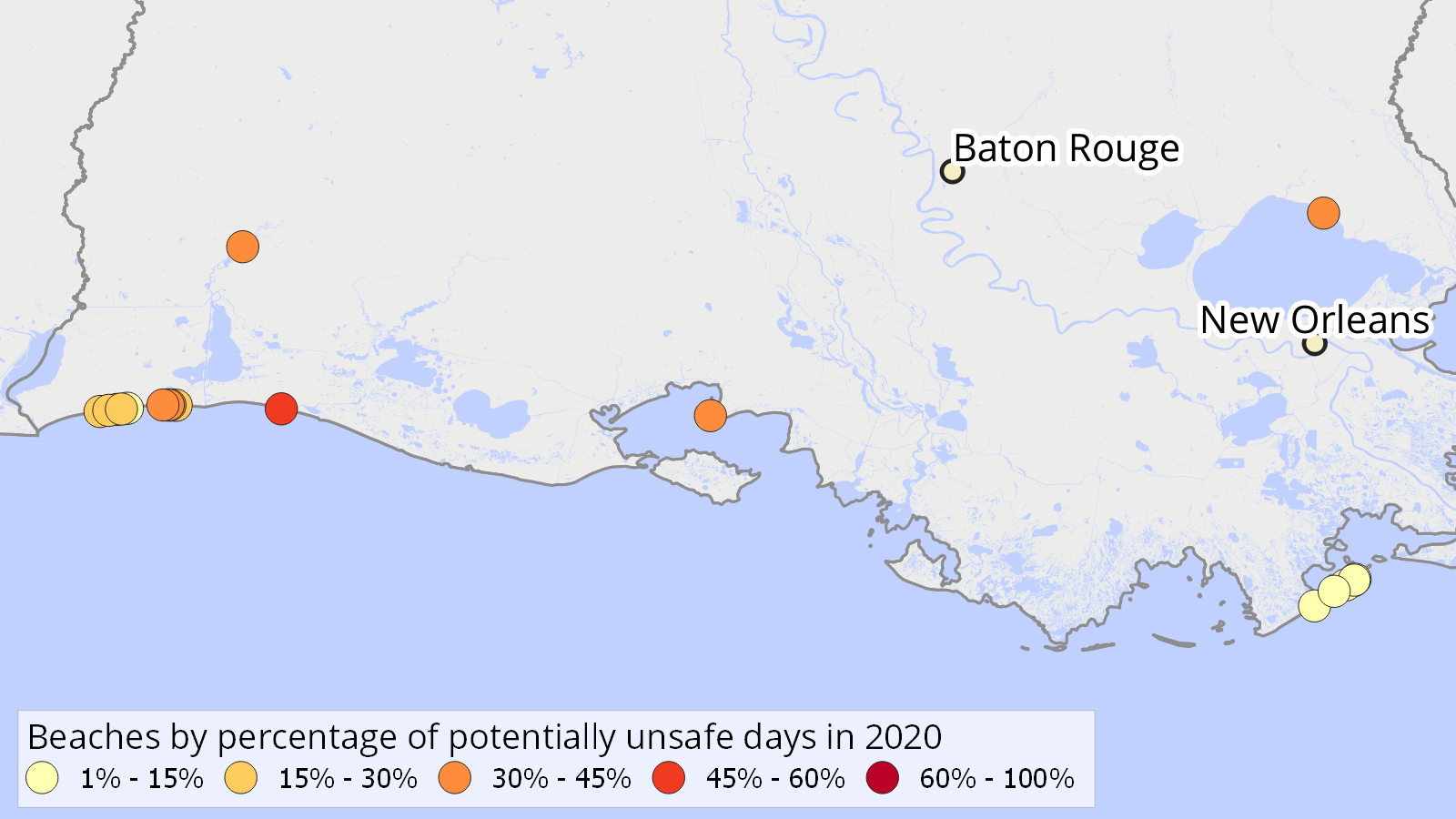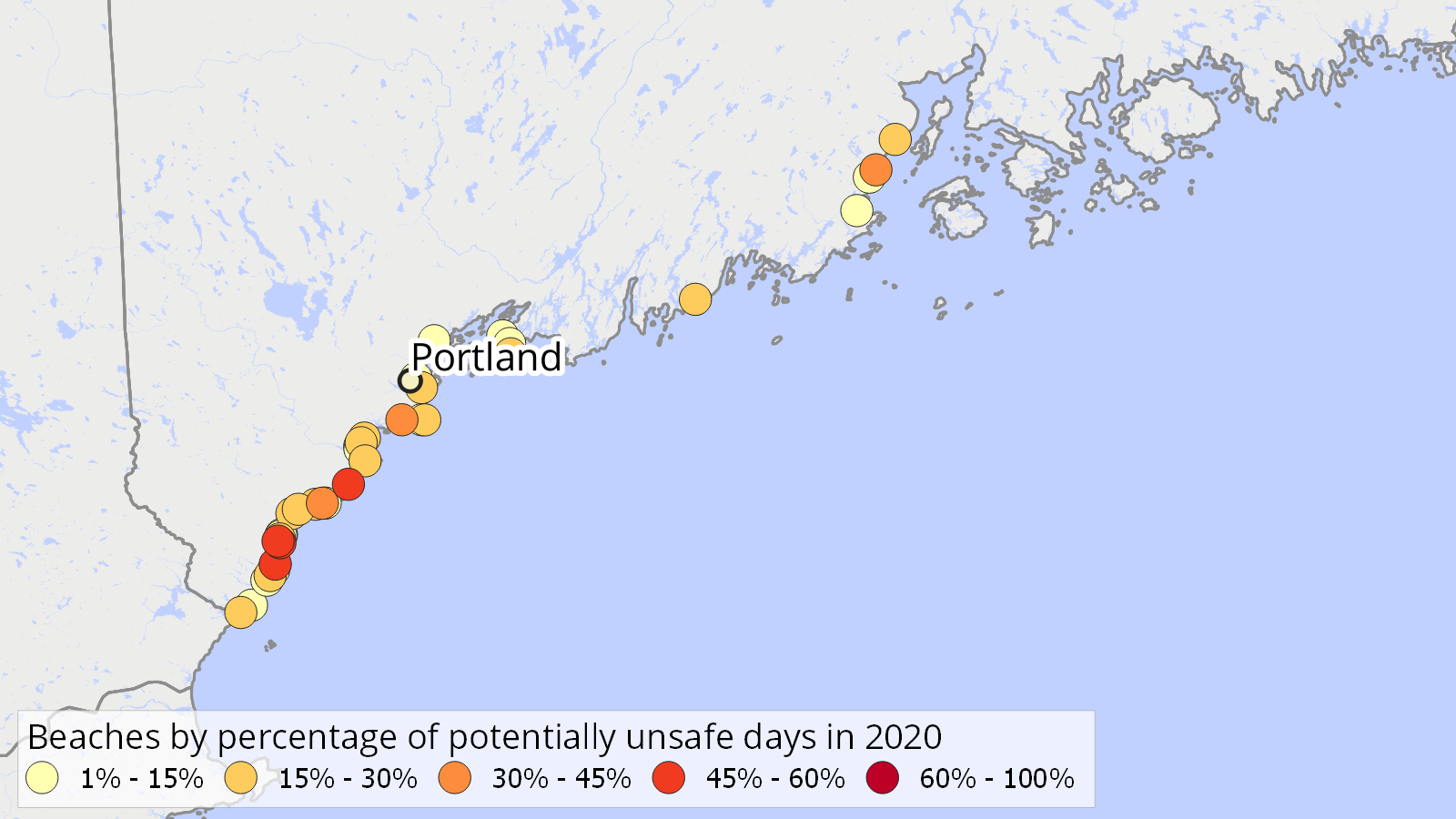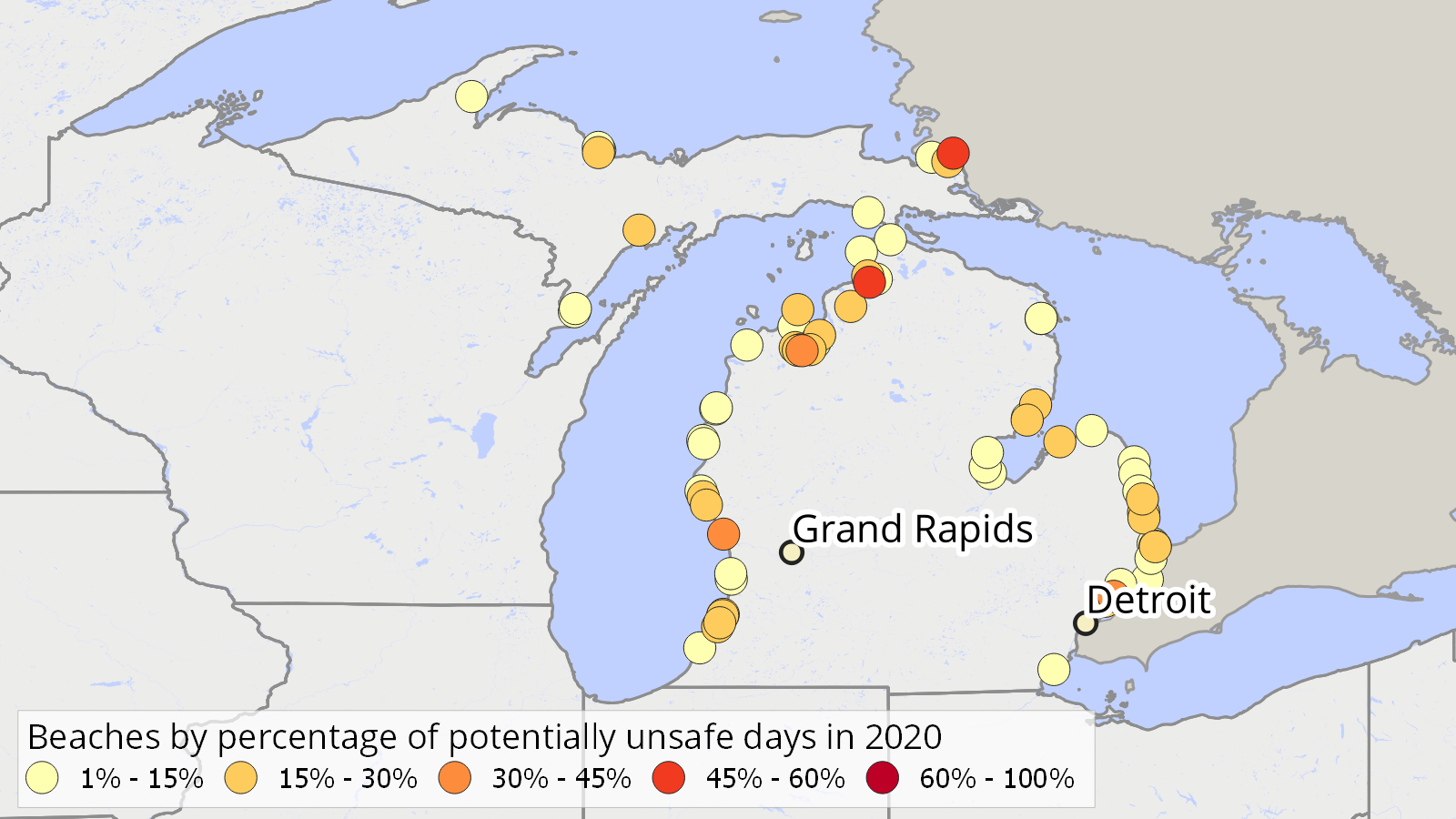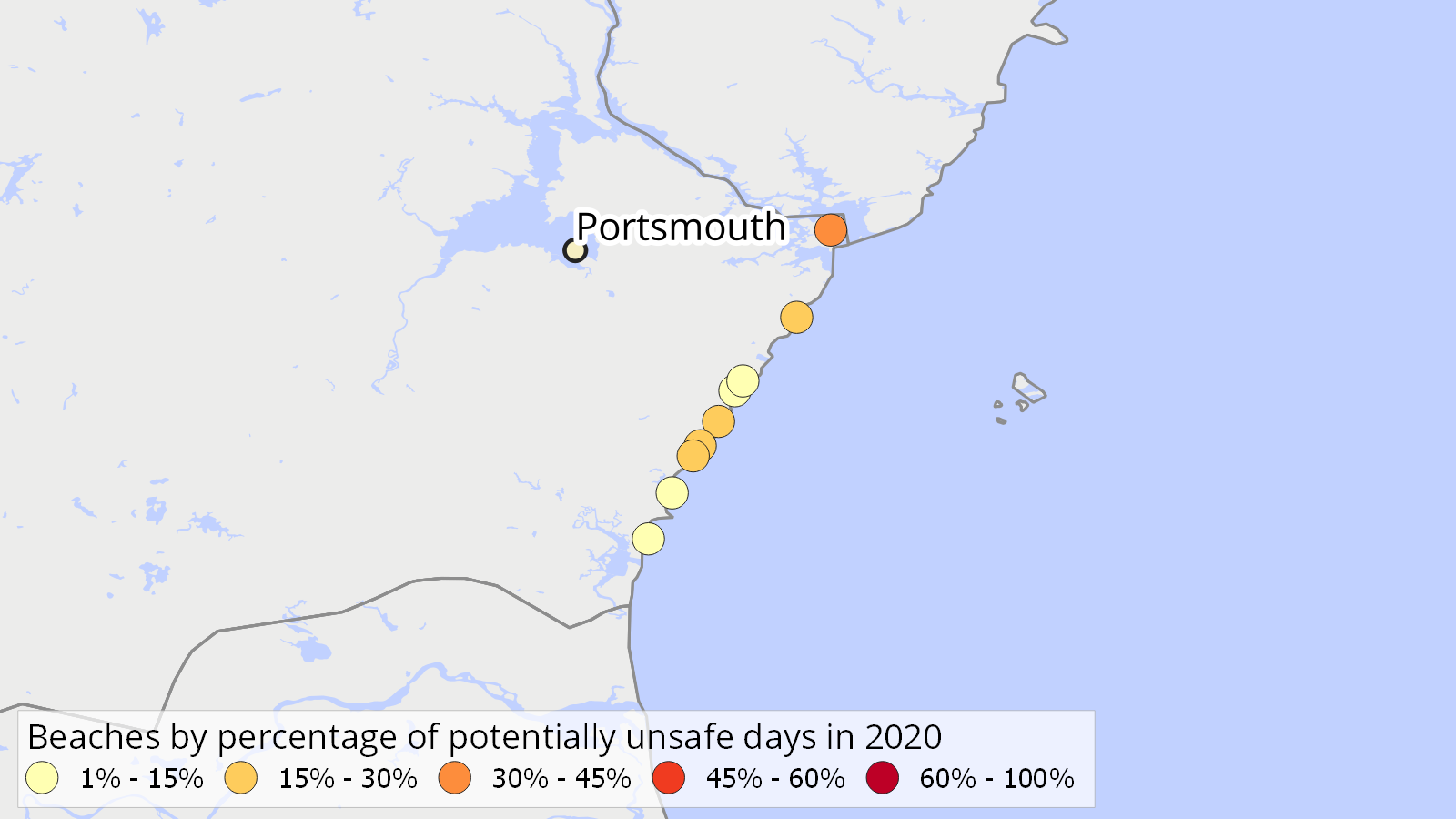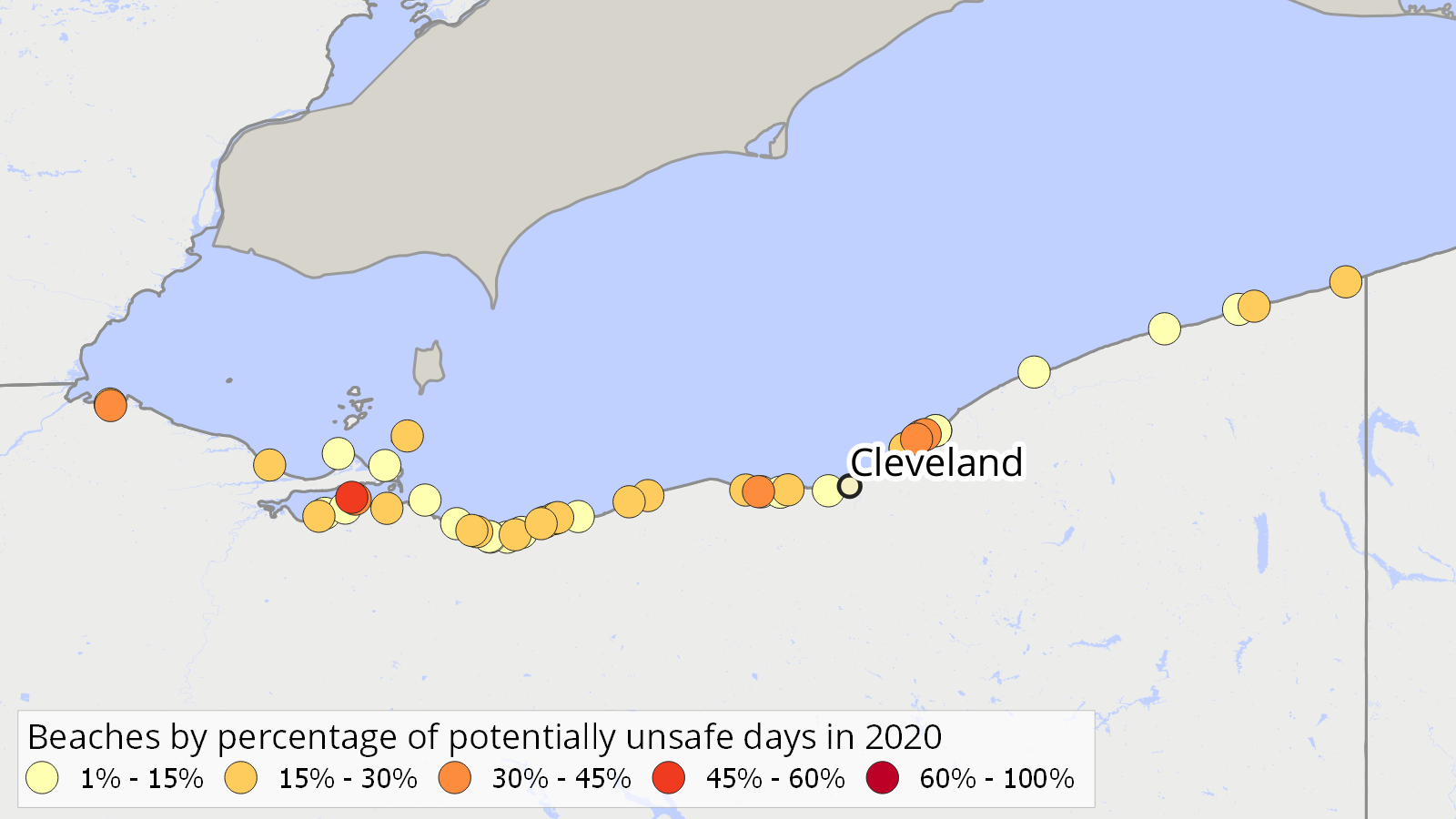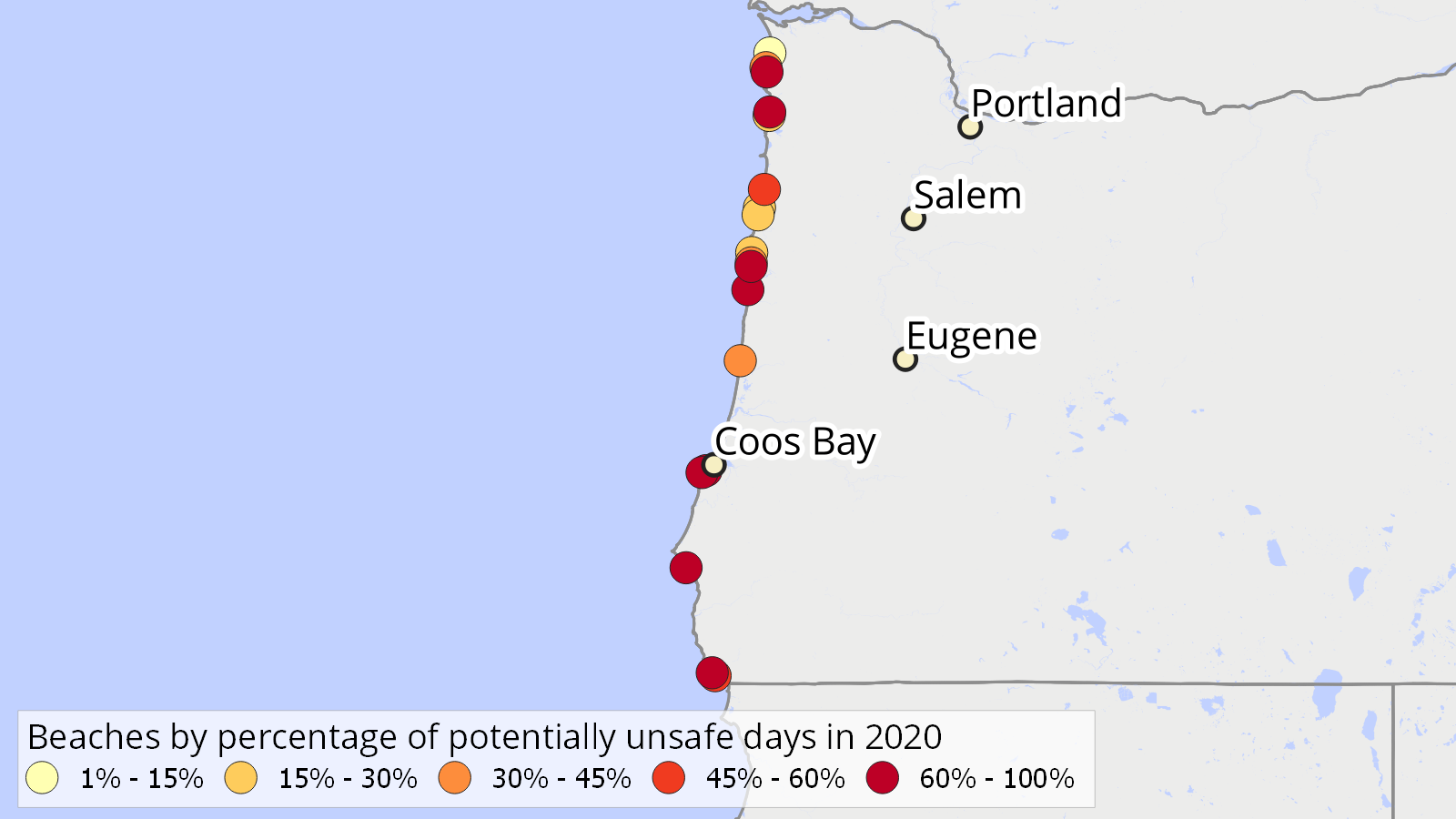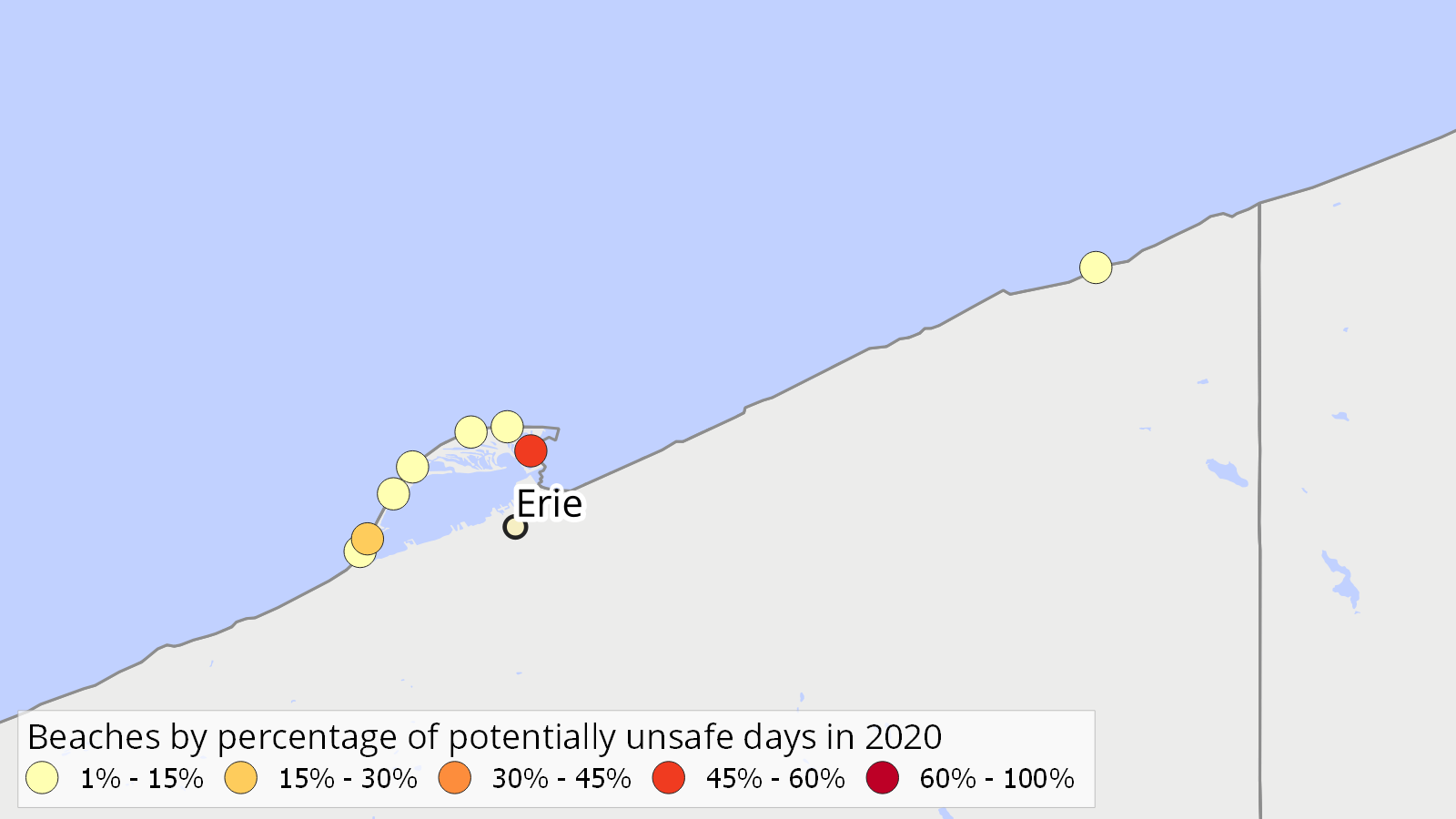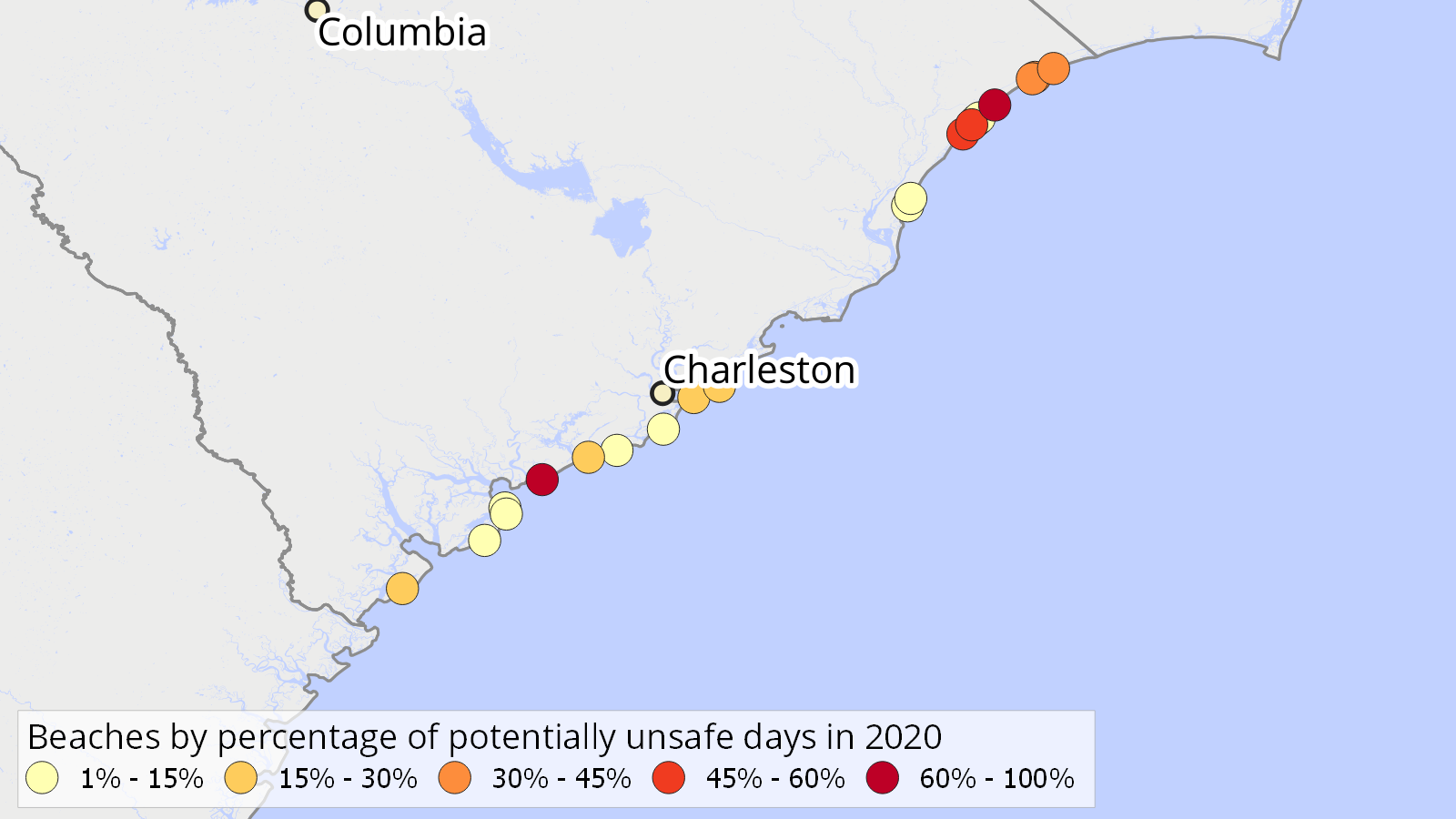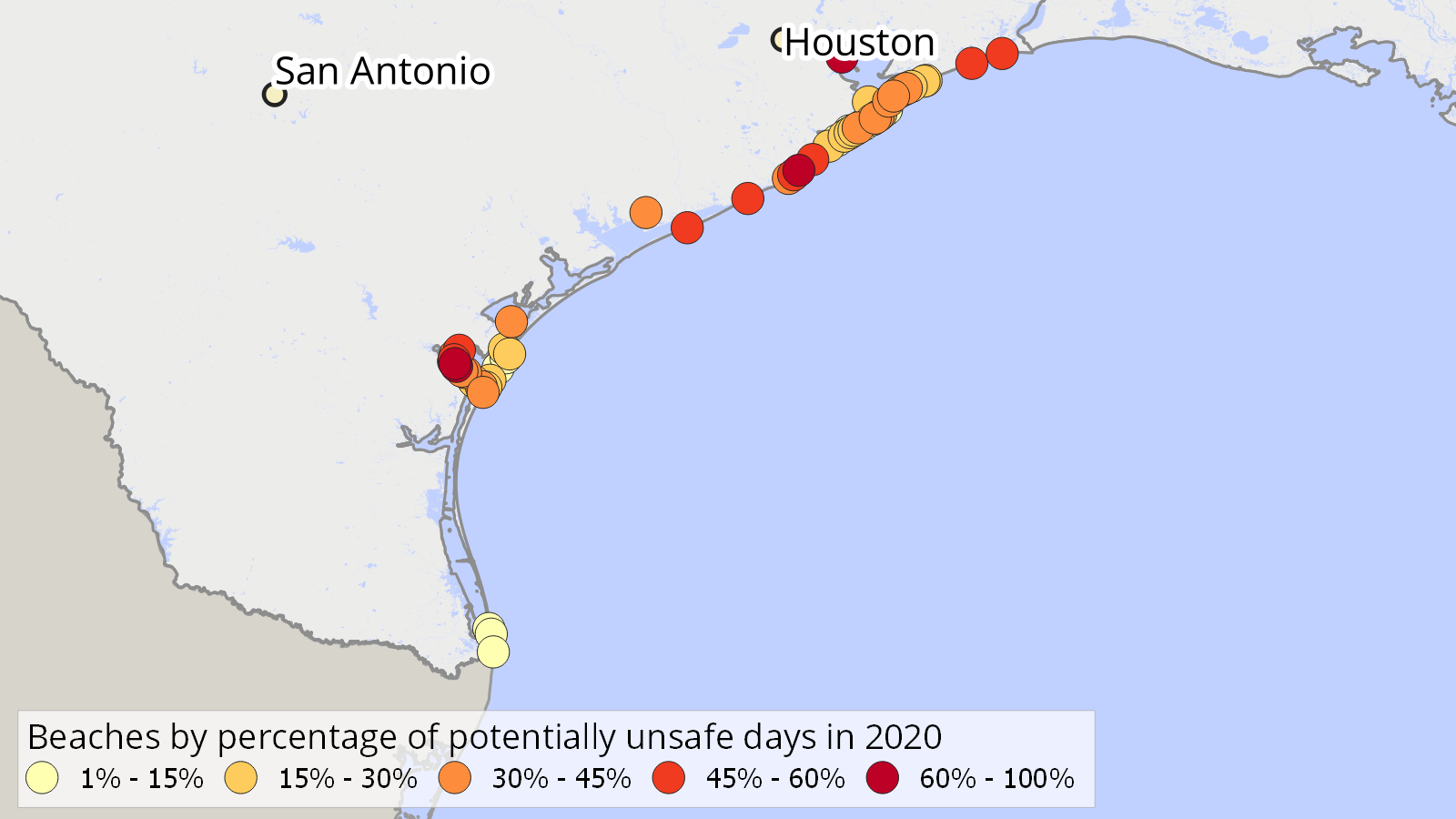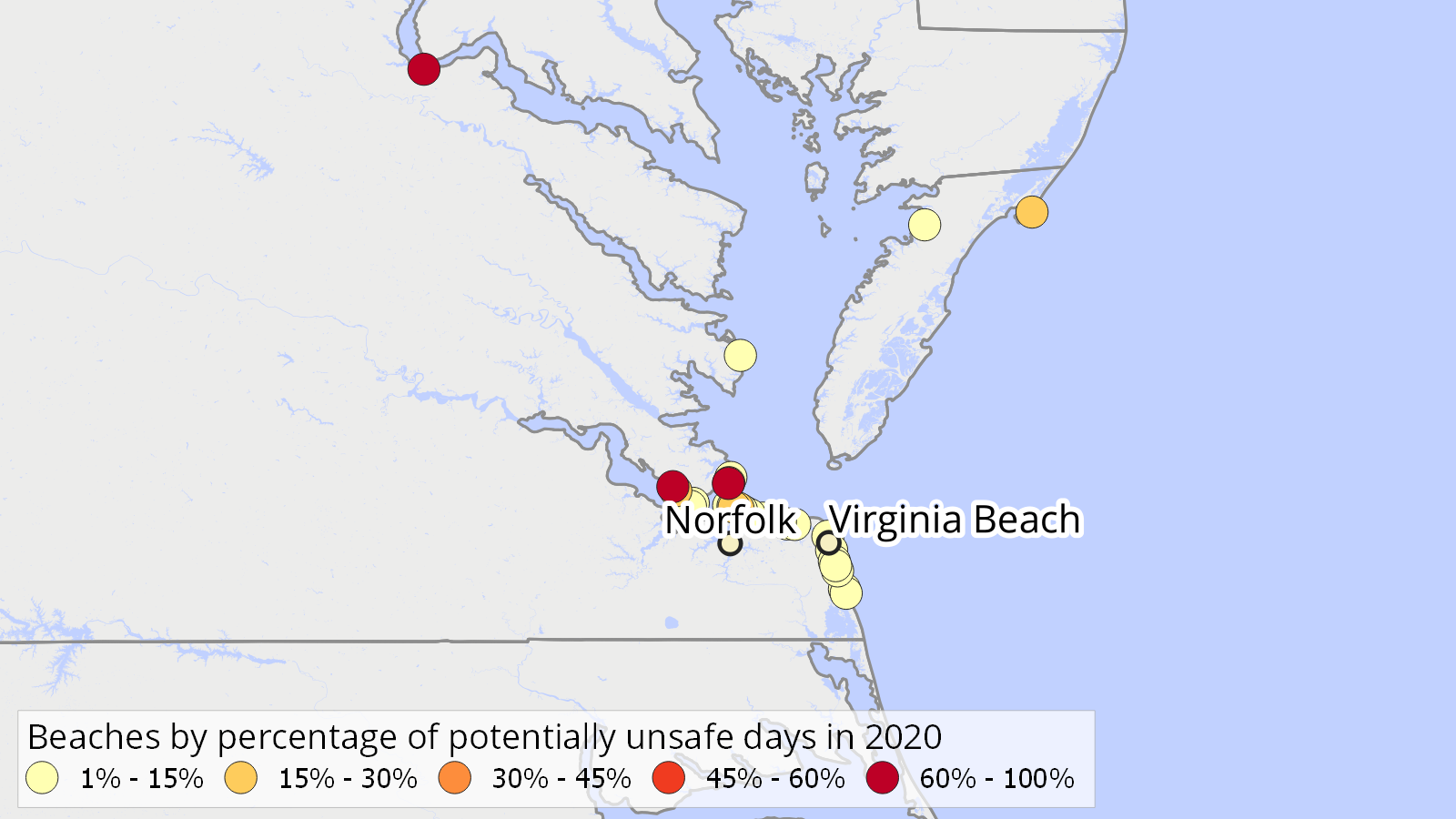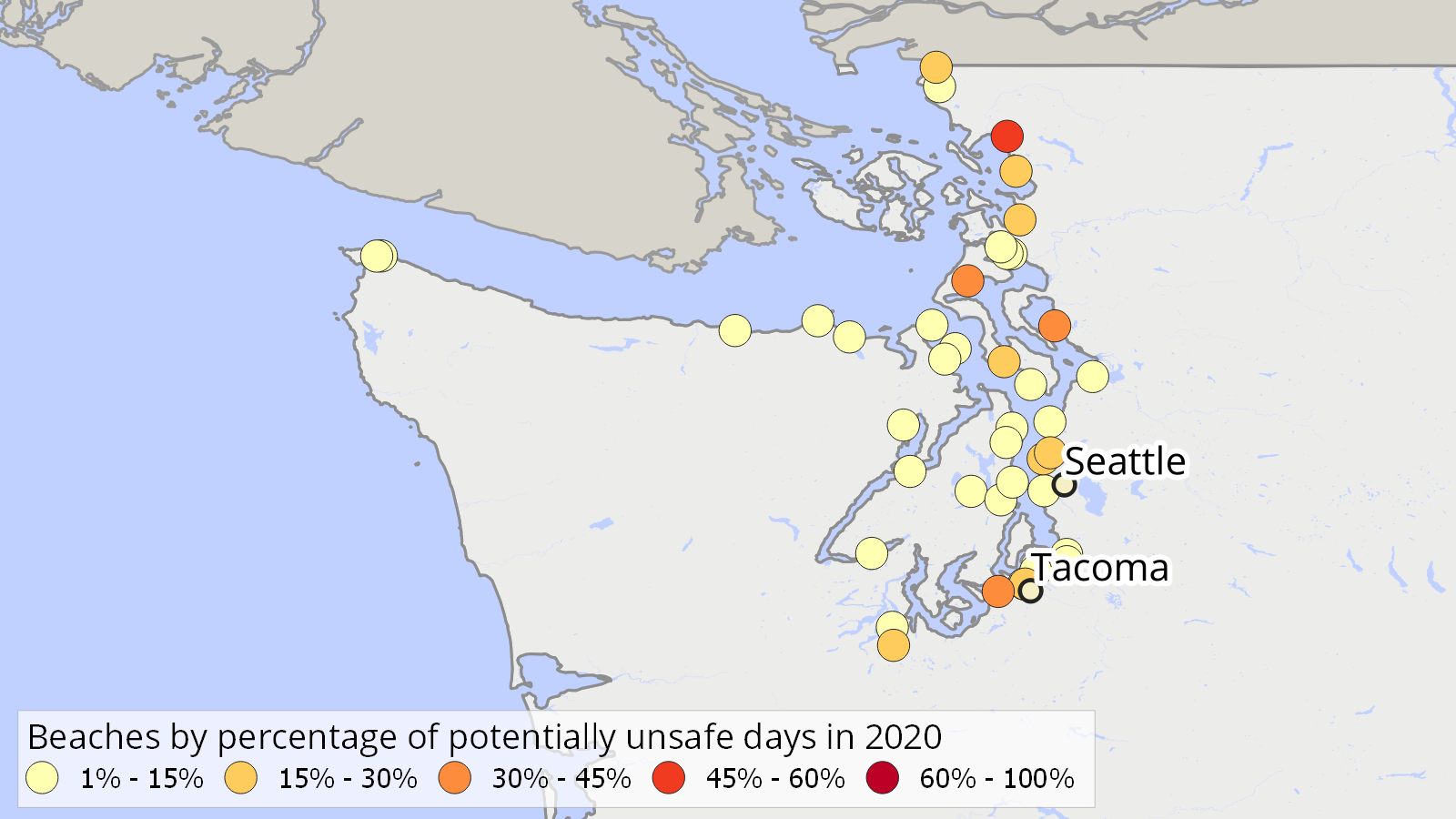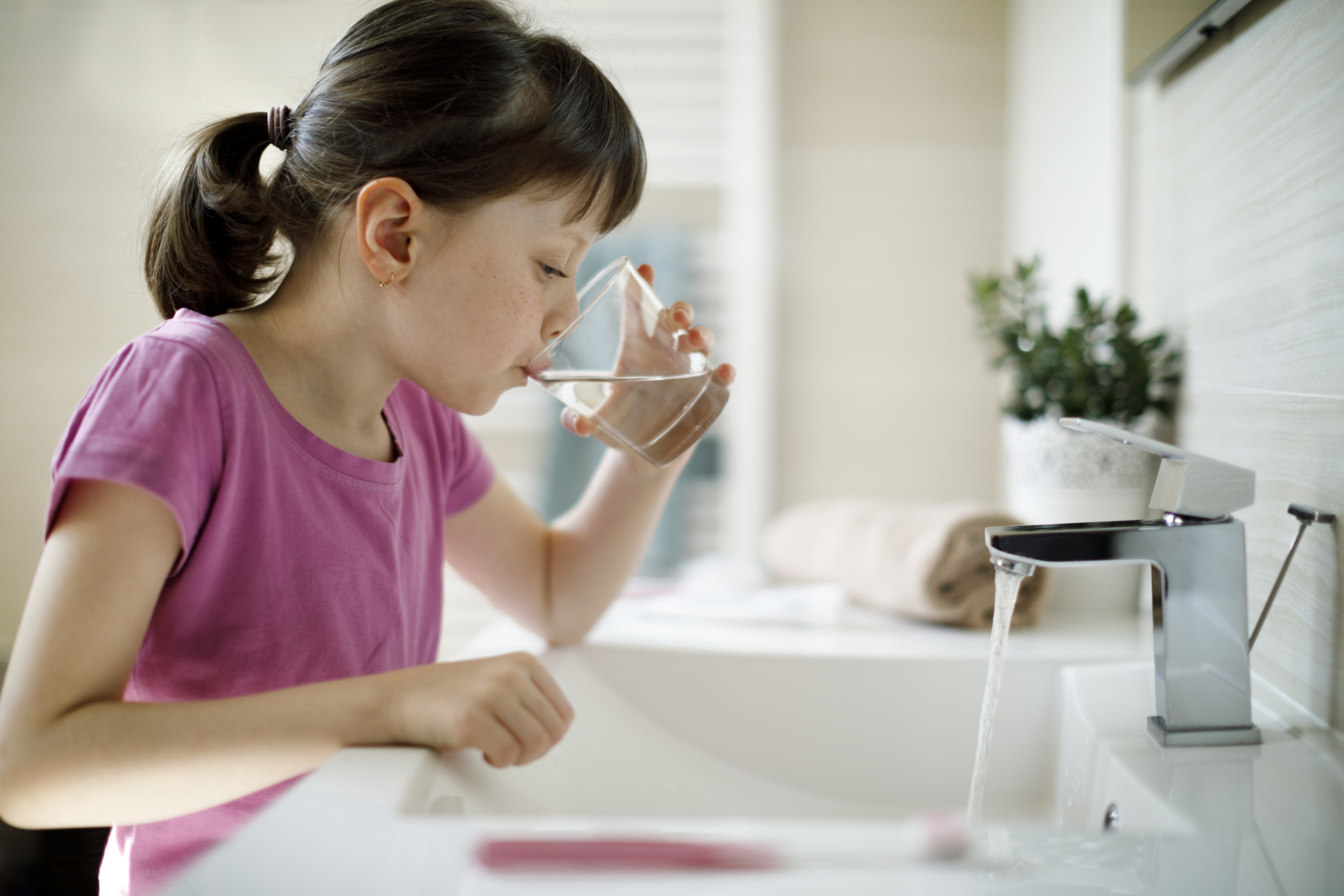
Safe for swimming?
Pollution at our beaches and how to prevent it
Pollution at Our Beaches and How to Prevent It
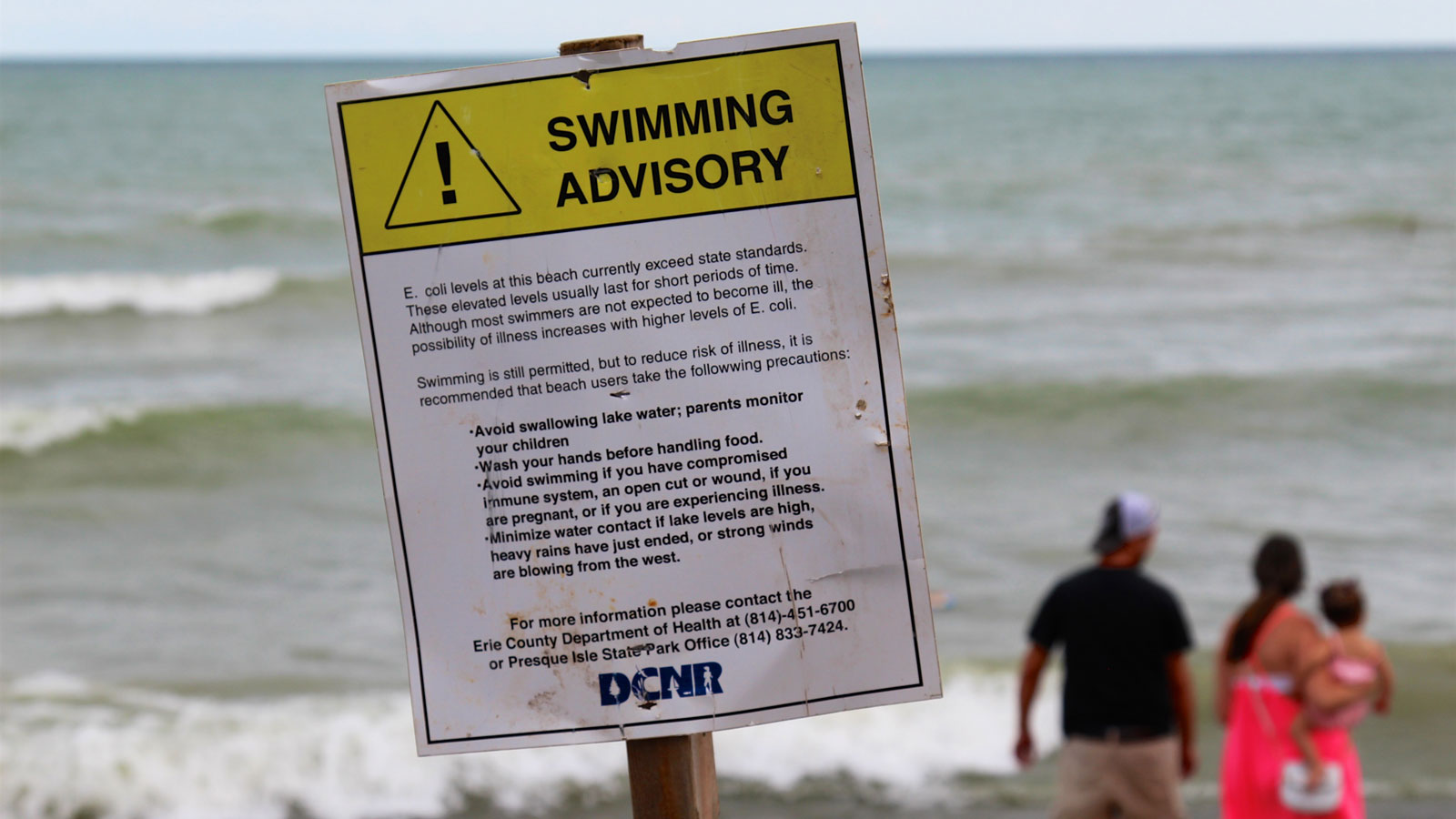
Americans love clean water. Every year, millions of us flock to our waterways to swim, surf, or go tubing, kayaking or fishing. That’s why the federal Clean Water Act set a goal of making all our waterways safe for swimming. Yet our research finds that all too often our beaches are still plagued with pollution, and millions of swimmers get sick every year. To dramatically reduce this pollution, we must boldy invest in improving our water infrastructure.
Table shows beaches with most potentially unsafe days in 2020.
Use the dropdown below to see which beaches in were potentially unsafe for swimming on the most days last year.
Use the dropdown below to see which beaches in were potentially unsafe for swimming on the most days last year.
Our analysis of fecal indicator bacteria sampled data from beaches in 29 coastal and Great Lakes states and Puerto Rico finds that, in 2020:
- The water at 328 beaches – more than 1 in every 10 beaches surveyed – was potentially unsafe on at least 25 percent of the days that sampling took place.
- More than half of all the 3,166 beaches reviewed were potentially unsafe for swimming on at least one day tested.
NOTE: Beaches were considered potentially unsafe if fecal indicator bacteria levels exceeded the U.S. Environmental Protection Agency’s “Beach Action Value” associated with an estimated illness rate of 32 out of every 1,000 swimmers. Many states use other thresholds for beach closure and advisory decisions, and therefore results presented here may differ from state reports on beach water quality.
Primary sources of fecal contamination include sewage overflows and runoff pollution.
To curb this contamination and help make our beaches safe for swimming, policymakers should invest in improving our water infrastructure, especially by deploying nature-based solutions to prevent runoff pollution.
FEATURED ACTION
Do you love the beach?
Help keep your favorite beach safe for swimming. Join the wave of supporters telling Congress to invest in water infrastructure to stop pollution that can make us sick.
URGENT: Congress is deciding on infrastructure funding, so please act now.
Photos: top-right, R Boed via flickr.com, CC-BY-2.0; others, public domain.
Fecal contamination makes beaches unsafe for swimming. Each year, people suffer an estimated 57 million illnesses — including nausea, diarrhea, ear infections, and rashes — from swimming in U.S. waters.
Our beaches are at risk. Runoff from paved surfaces, overflows from aging sewage systems, and manure from industrial livestock operations all threaten the waters where Americans swim. These pollution threats are getting worse with climate change, as more extreme precipitation events bring heavy flows of stormwater.
- Sprawling development has created more impervious surfaces that cause runoff pollution and has destroyed natural areas such as wetlands that protect beaches from contamination. From 1996 to 2016, U.S. coastal regions added 4.2 million acres of development, while losing 640,000 acres of wetland and nearly 10 million acres of forest.
- America’s sewage infrastructure is deteriorating and outdated. Many communities, particularly around the Great Lakes, still use combined sewers that were designed to discharge sewage directly to waterways during heavy rainfall. Sanitary sewers, which are designed to carry sewage alone, can also spill dangerous sewage if they are not properly maintained — and they overflow as many as 75,000 times each year in the U.S.
- The rise of factory farms has resulted in large concentrations of livestock manure that cannot be stored safely and is often overapplied to crops. All too often, rainfall washes excess manure from cropland into our waterways, where it can put swimmers’ health at risk. Animal manure can also contain pathogens that are resistant to antibiotics, creating added risk to public health.
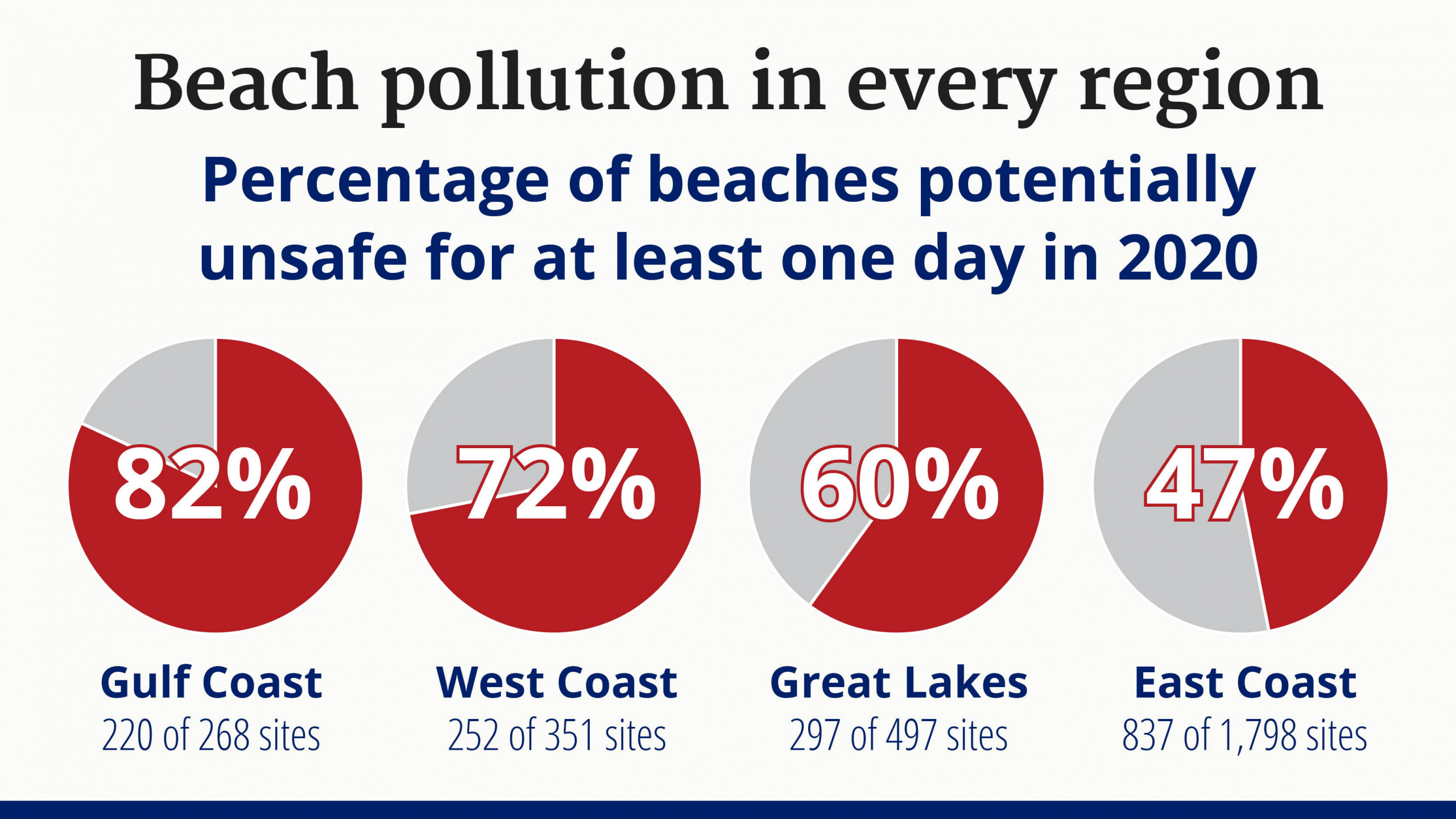
Of more than 3,000 beaches sampled for bacteria across the country in 2020, 328 were potentially unsafe for swimming on at least 25 percent of days that testing took place.
- As of May 2021, sampling data for 2020 from 3,166 beaches in 29 coastal and Great Lakes states and Puerto Rico was available through the National Water Quality Monitoring Council’s Water Quality Portal.
- Of those beaches, 1,689 (53 percent) had bacteria levels indicating potentially unsafe levels of fecal contamination for swimming on at least one day, and 328 were potentially unsafe on at least 25 percent of the days that sampling took place.
- Swimmers could also be at risk at additional beaches where no bacterial testing was conducted or available through the Water Quality Portal.
In every coastal and Great Lakes state and in Puerto Rico, sampling revealed potentially unsafe levels of contamination in 2020.
Our recommendations
To ensure that all of our beaches are safe for swimming, policymakers should work to protect beaches from runoff and sewage pollution – including by stopping pollution at its source, and by protecting natural areas. Solutions include:
- Dramatically increasing funding to fix sewage systems and prevent runoff pollution through natural and green infrastructure, including rain gardens, permeable pavement and green roofs.
- Protecting wetlands, which filter out pollutants like bacteria, and streams, which flow to coastal areas where people swim.
- Enacting moratoriums on new or expanded industrial-scale livestock operations, particularly in areas where these operations would threaten our beaches and other waterways.
Policymakers should also ensure that swimmers are presented with the best possible information to make decisions regarding their health. Officials should expand funding for beach testing to ensure adequate testing at all beaches. States should use the EPA’s most protective “Beach Action Value” bacteria standard for making beach advisory decisions and should work to implement same-day bacteria testing and warning systems.
Did you find this information useful? Please help us keep up this work. To make change, we need to first understand the problems we’re trying to solve. And that takes research. We release hard-hitting reports produced by our research partners each year focusing on policy solutions we could pursue to address environmental issues ranging from climate change to conservation. You can help with a gift of $5 or more.
Topics
Find Out More

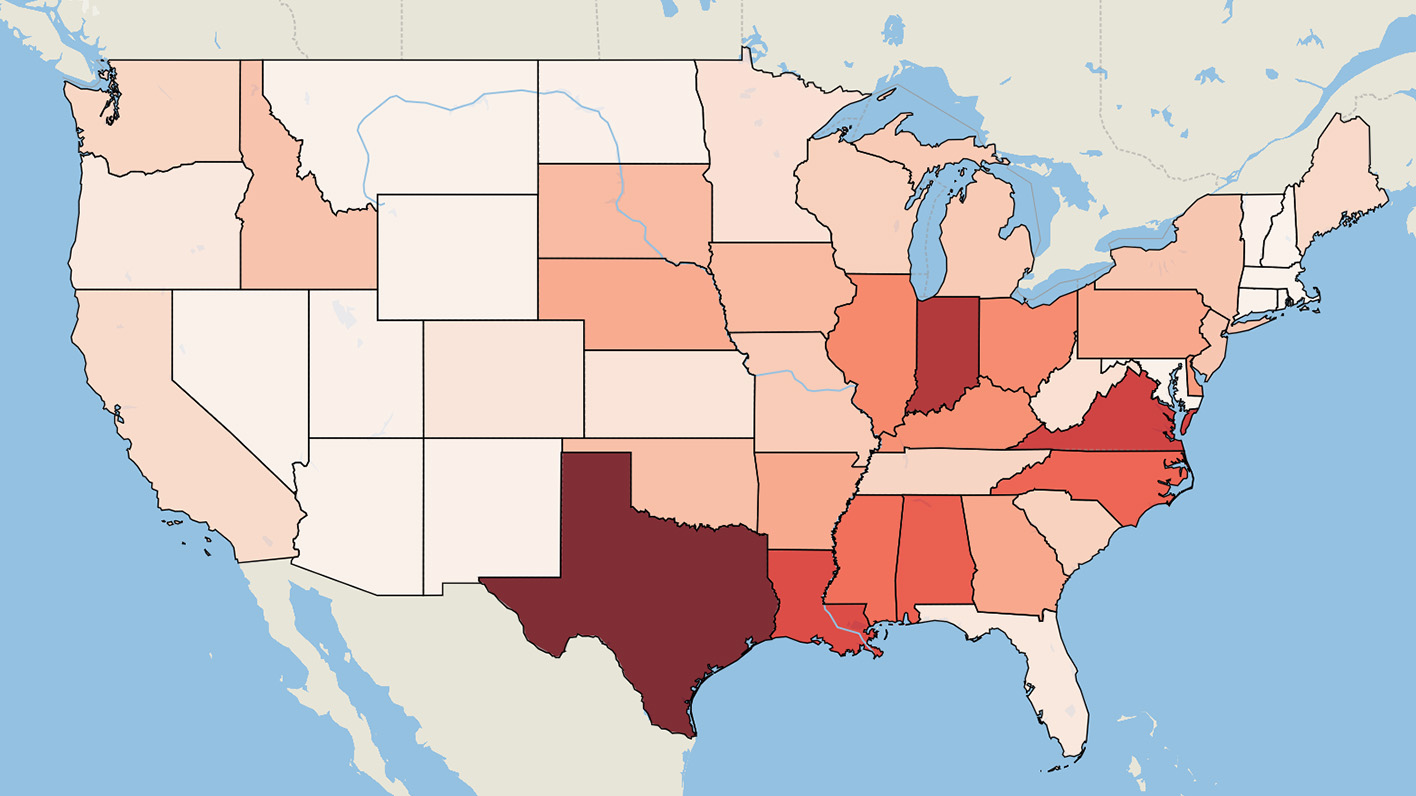
Who are the top toxic water polluters in your state?

Green schools guide
